Stellar Evolution in Pictures
All stars begin as clouds of gas and dust.
Young stellar objects consist clouds of gas and dust which collapse to form a star when gravitational forces overcome the gas and magnetic pressures which prevent collapse.
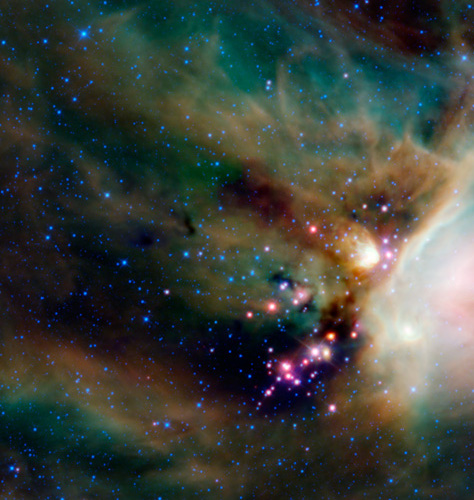
(NASA/JPL-Caltech/WISE Team) Young stellar objects (bright pink points near center) in the \( \rho \) Opiuchi cloud in infrared
The Main Sequence
When the nuclear reactions in the star begin and the star is achieves equilibrium (also known as "hydrostatic equilibrium"), it lies on the "main sequence". The rest of the star's evolution (unless the star is in a binary system which then complicates the picture) depends almost entirely on the mass. The mass of the sun is referred to as \( \mathrm{M}_{\odot} \).
Less than 8 times the mass of the sun†
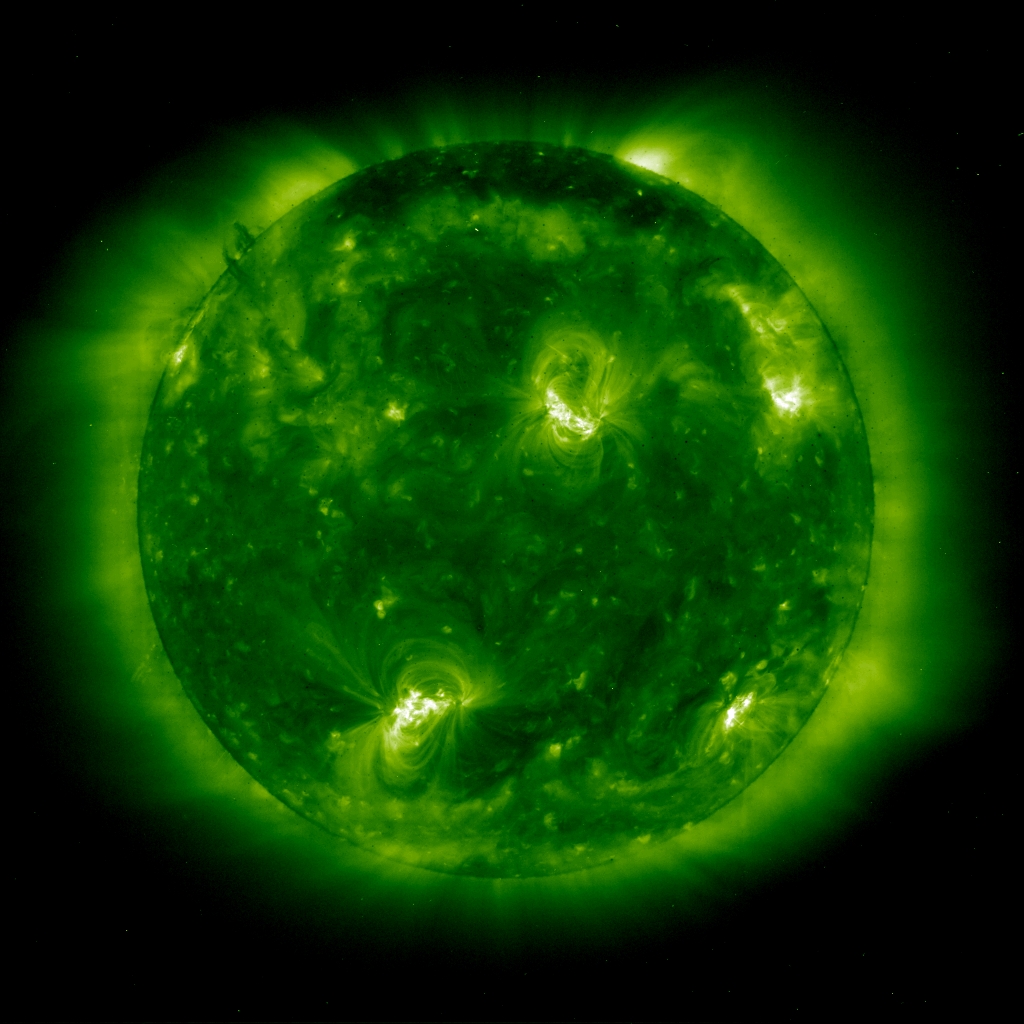
(SOHO; ESA & NASA) An image of the sun in extreme ultraviolet from NASA's Solar and Heliospheric Observatory
Between 8 and 20 times the mass of the sun
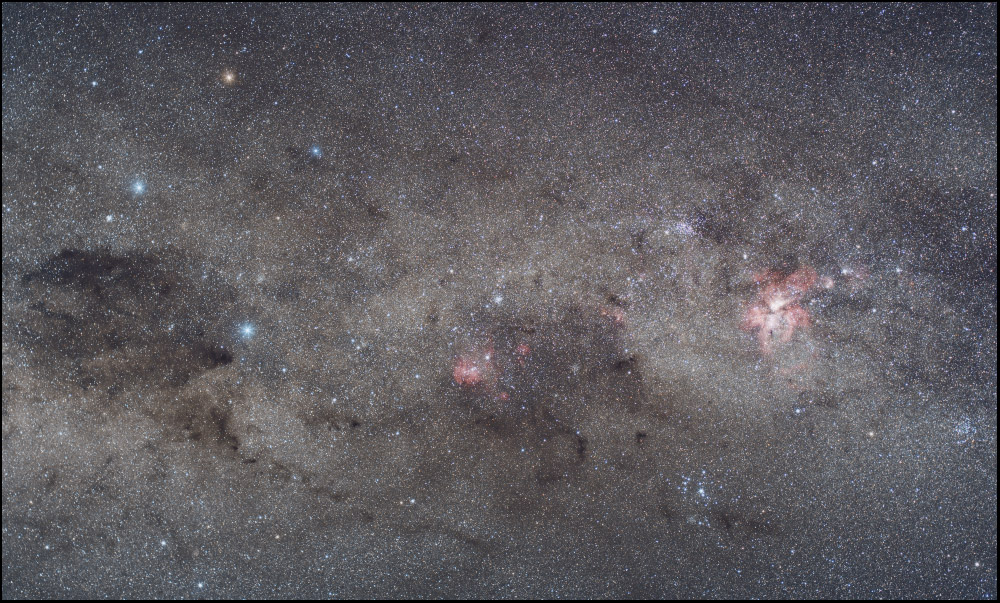
(Y. Beletsky & ESO) An optical image including the "southern cross" asterism (on the left-hand side of the image) in the constellation Crux. The larger blue star which forms the left arm of the cross is \( \beta\,\,\mathrm{Crucis} \) (aka Mimosa) and has a mass of approximately \( 16~\mathrm{M}_{\odot} \)
Greater than 20 times the mass of the sun

(ESO/GRAVITY consortium/NASA/ESA/M. McCaughrean) The background image of the Trapezium cluster is from ISAAC on the ESO's Very Large Telescope. The lower-right inset, which shows \( \theta \) Orionis C (\(~11~\mathrm{and}~33~\mathrm{M}_{\odot}\)), is from the GRAVITY instrument.
Transition
Low mass stars ( < 8 \( \mathrm{M}_{\odot} \) ) quietly evolve through a red giant phase and then become a white dwarf, while more massive stars ( > 8 \( \mathrm{M}_{\odot} \) ) proceed to a "core-collapse supernova" explosion.

(NASA/STScI/AURA) The ring nebula in optical. The colorful planetary nebula is the remainder of the material ejected in the red giant phase. A newly-formed white dwarf is visible in the middle.
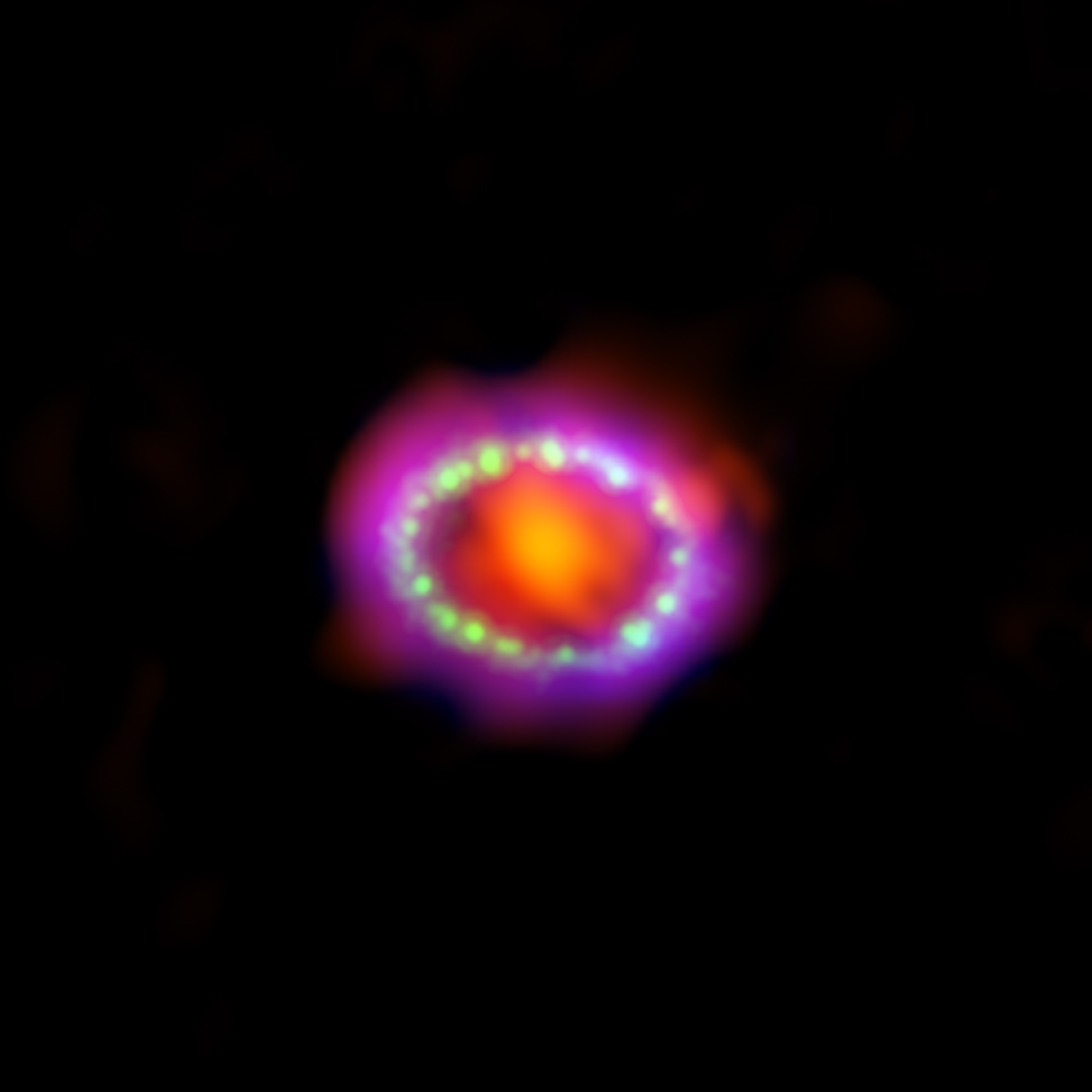
(X-ray: NASA/CXC/SAO/PSU/K.Frank et al.; Optical: NASA/STScI; Millimeter: ESO/NAOJ/NRAO/ALMA) The remnant of a core-collapse supernova explosion observed in 1987. The X-rays are blue, the visible light is green, and the radio emission is red. The final state of the compact object has not yet been definitively identified.
Compact objects
The final stage of evolution.
Main-sequence stars less than 8 times the mass of the sun result in white dwarfs
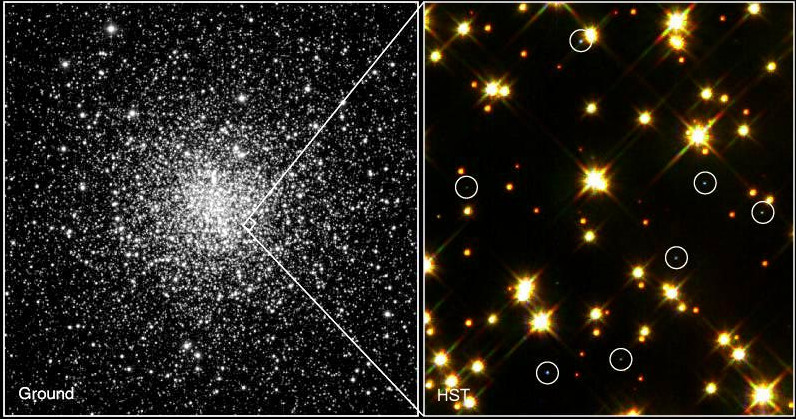
(H. Richer and NASA) An image of globular cluster M4 from the Hubble Space Telescope (left) and a small portion of the cluster (right) containing several white dwarfs (circled).
Main-sequence stars between 8 and 20 times the mass of the sun result in neutron stars
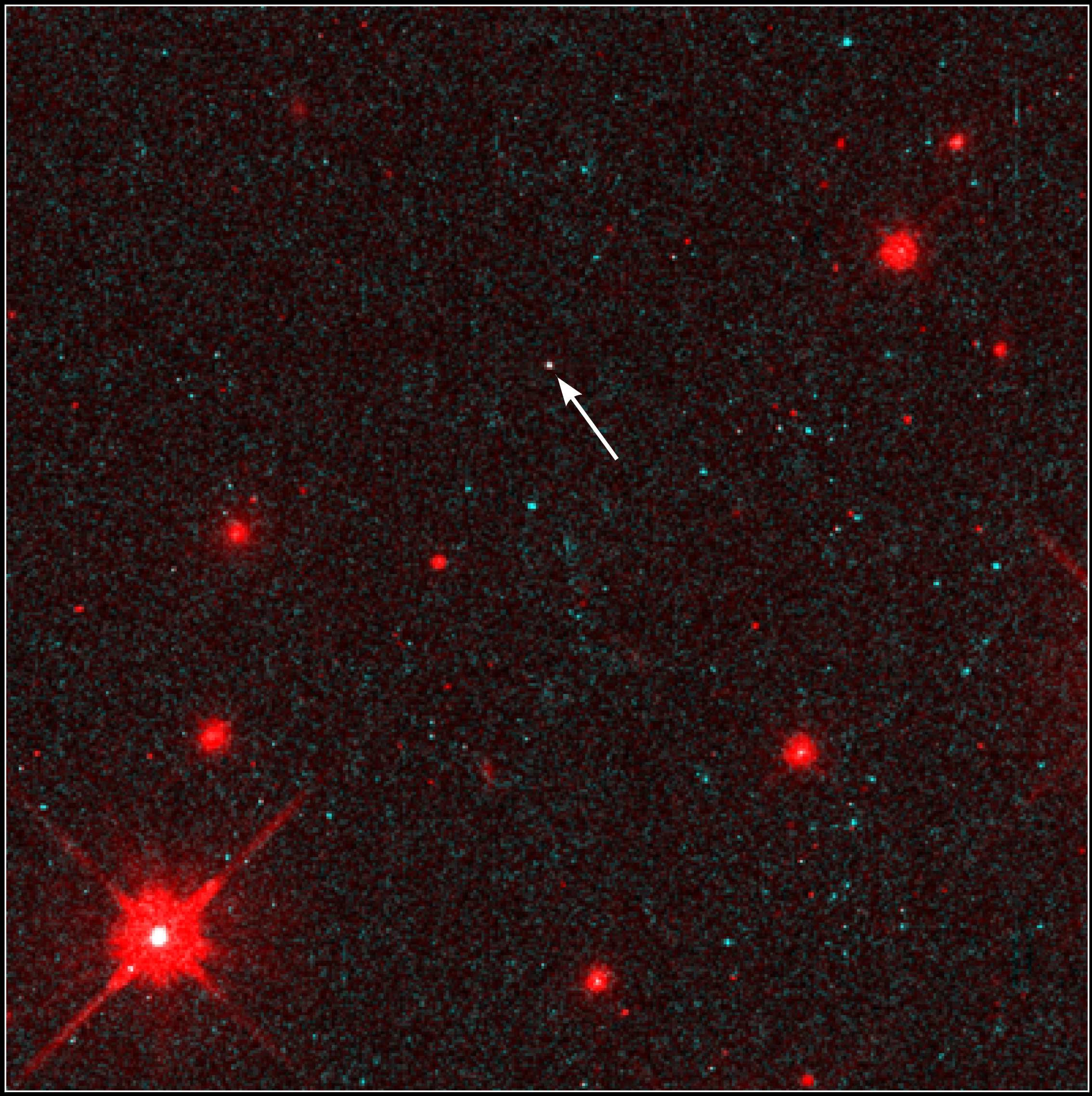
(F. Walter and NASA) An image of the neutron star RXJ 1856-3754 from the Hubble Space Telescope.
Main-sequence stars greater than 20 times the mass of the sun result in black holes
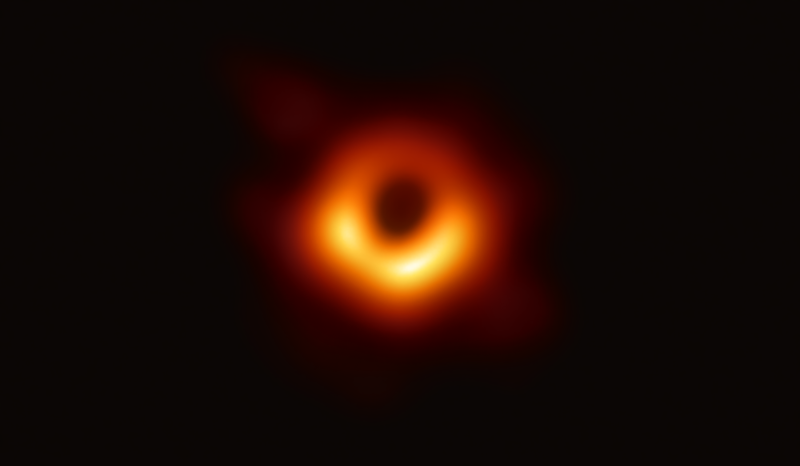
(EHT) An image of matter surrounding the black hole at the center of the elliptical galaxy M87 in radio.
Notes:
†: These demarcations in mass are not well-known. The values 8 and 20 are reasonable estimates.